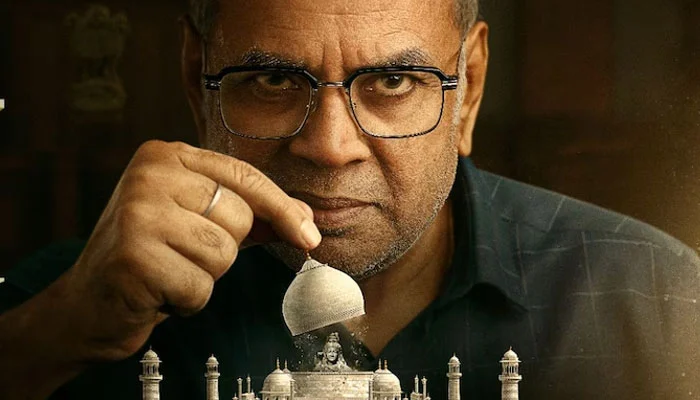Introduction
Bollywood veteran Paresh Rawal’s upcoming film The Taj Story has stirred widespread controversy even before its release. The film, directed by Tushar Amrish Geol, features actors Zakir Hussain, Amruta Khanvilkar, and Senha Wagh alongside Rawal. What began as a promotional effort with the release of the movie poster has now escalated into a heated social media debate, reviving age-old discussions surrounding the history of the Taj Mahal.
The Poster That Triggered Controversy
The first poster of The Taj Story shows Paresh Rawal opening the dome of the iconic Taj Mahal, only to reveal a statue of Lord Shiva inside. This imagery immediately attracted attention, as it resonates with a longstanding claim that the Taj Mahal was originally a Hindu temple dedicated to Lord Shiva. Supporters of this theory argue that the poster is a symbolic representation of their belief, while critics see it as a deliberate attempt to provoke religious sentiments.
Historical Debate and PN Oak’s Claims
The controversy surrounding the Taj Mahal’s origins is not new. It gained prominence decades ago when historian PN Oak published a book suggesting that the monument was originally a temple called Tejo Mahalaya. According to Oak, the structure existed centuries before Mughal rule and was associated with the Hindu ruler Jai Sing. However, mainstream historians have consistently dismissed these claims, labeling them as speculative and lacking credible evidence. Despite criticism, the theory continues to find support among certain groups, and The Taj Story has reignited the discourse.
Legal and Political Dimensions
In recent years, the debate over the Taj Mahal’s origins has also entered legal and political arenas. In 2022, a petition was filed by Rajneesh Singh, seeking a fact-finding panel to investigate the monument’s history. The petition specifically requested the opening of 22 sealed rooms within the Taj Mahal to search for possible Hindu idols or inscriptions. The court, however, declined to intervene, stating that the matter fell outside judicial purview.
Adding fuel to the discussion, BJP Member of Parliament Diya Kumari, a descendant of the Jaipur royal family, publicly claimed in 2022 that the land on which the Taj Mahal stands belonged to her ancestors. These statements, though politically charged, further intensified the ongoing debate.
Social Media Reactions
With the unveiling of The Taj Story poster, social media has become a battleground of contrasting opinions. Supporters of the film argue that cinema has the right to explore alternate narratives of history, while critics accuse the makers of stoking communal tensions. Hashtags and online discussions reflect a divided public, with some praising Paresh Rawal’s boldness and others condemning what they view as a distortion of historical facts.
The Role of Cinema in Historical Narratives
The controversy surrounding The Taj Story highlights the sensitive relationship between cinema and history in India. Films often serve as powerful mediums for revisiting cultural and political debates. While they provide artistic freedom to explore untold stories, they also risk influencing public perception of historical events. In this case, Paresh Rawal’s film has reignited one of India’s most contested historical discussions, raising questions about where artistic liberty ends and historical accountability begins.
